

Cherry Blossom Sightings
|
When people are asked which season they would like to visit Japan, more often than not the answer is spring, and more specifically, the cherry blossom season. Indeed, the fleeting sight of blooming cherry blossoms captivates both locals and tourists and is so strongly associated with Japan, that it is even recognised as the unofficial national flower. The oldest cherry blossom tree in Japan is Yamataka Jindai Sakura located in Yamanashi, and is estimated to be 2,000 years old.
A cherry blossom’s blooming period is brief, and it only takes a week to reach full bloom after the opening of its first blossoms. Moreover, strong gusts of wind and rain can end the period prematurely. However, even the scene of falling cherry blossom petals is a remarkable sight. Due to its nature, the flower symbolises transience and impermanence, as well as rebirth and renewal. While the flower is often pictured as a light pink flower with five petals, there are in fact over 200 varieties of cherry blossom trees in Japan. For example, some species can have 10, 20 or even over 100 petals. The colour of the flower may also differ from light pink, such as white, dark pink, yellow or green. The most common type is Somei Yoshino, which was cultivated during the Edo period. This pale pink variety with five petals can be found across Japan. Another common one is Yamazakura, which looks similar. However, it grows in the wild and is usually found growing among the mountains. One of the distinct varieties is Shidarezakura, otherwise known as the weeping cherry tree due to its drooping branches. The most famous one is Miharu Takizakura located in Fukushima, and as suggested by its name, it resembles a waterfall. Being 12 metres high and over 1,000 years old, it is one of the five great cherry trees in Japan and a national treasure. Some of the more distinct types include kanhizakura and ukon. The former is found prominently in Okinawa, and is known for its striking dark pink flower shaped like a bell. The latter is yellow and named after the Japanese word for turmeric, a spice commonly used in Indian curry. Kikuzakura is also easily recognisable, as it resembles a chrysanthemum flower with an average of 100 petals per flower. Fugenzo is yet another unique variety with as many as 40 petals per flower, and its colour gradually changes over time from white to pink. Every year, people look forward to the forecasts, as any subtle weather changes will affect the blooming period. Generally, the peak is in April. However, flowers can bloom as early as January in Okinawa, while in Hokkaido they usually bloom in May. This information is critical for organising hanami, or flower viewing parties, when people enjoy picnics beneath the gorgeous cherry blossom trees. Hanami used to be held by only aristocrats and feudal lords, and only became popular among the common people in the Edo period. Today, some of the popular spots for hanami include Shinjuku Gyoen National Garden and Ueno Park in Tokyo. Rice flour dumplings called dango are usually eaten too, and come in a combination of pink, white and green colours. There are numerous places to view the beauty of cherry blossoms. One of the most famous places is Mount Yoshino in Nara, where around 30,000 trees stretch on for 8 kilometres. The lovely flowers contrasting historic castles also create a picturesque scenery, and some notable sites are Himeji Castle in Hyogo, Matsumae Castle in Hokkaido, and Hirosaki Castle in Aomori. If you plan to visit Japan soon for the upcoming cherry blossom season, do mark down the forecast dates and the best spots to appreciate the cherry blossoms, in order to create the most memorable experience! For those with no travel plans, you can catch them at Gardens by the Bay and enjoy a slice of Japan in Singapore. |
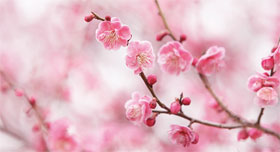 © amanaimages Inc. 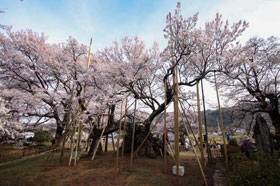 Yamataka Jindai Sakura © photoAC 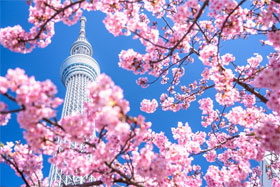 © Japan Up Close 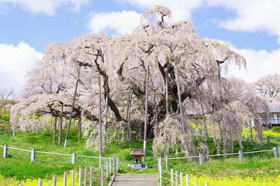 Miharu Takizakura © photoAC 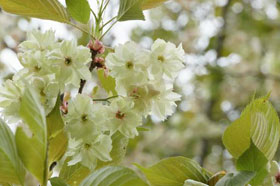 Ukon © photoAC 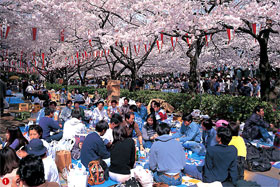 © JTB Photo 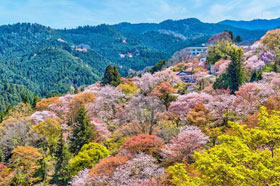 Mount Yoshino © photoAC |
Resources
|
“Japan’s Beloved Symbol of Spring”. 2011. Web Japan. Accessed 21 February. https://web-japan.org/trends/09_food/jfd110331.html. “A Beginner’s Guide to Cherry Blossoms: When do the cherry blossoms bloom”. 2019. Japan Up Close. https://japanupclose.web-japan.org/culture/c20190227_1.html. “Cherry Tree Varieties”. 2023. japan-guide.com. Accessed 21 February. https://www.japan-guide.com/e/e2011_species.html. “10 Exotic Types of Japanese Cherry Blossom Trees You’ll Fall in Love With”. 2021. LIVE JAPAN. https://livejapan.com/en/article-a0001031/. “Spring in Japan: Cherry Blossom Forecast 2023”. 2023. Japan National Tourism Organization. Accessed 21 February. https://www.japan.travel/en/see-and-do/cherry-blossom-forecast-2023/. |
|
Japan Creative Centre 4 Nassim Road, Singapore 258372 +65 6737 0434 / jcc@sn.mofa.go.jp https://www.sg.emb-japan.go.jp/JCC/ Nearest parking at Orchard Hotel & Delphi Orchard |
 |